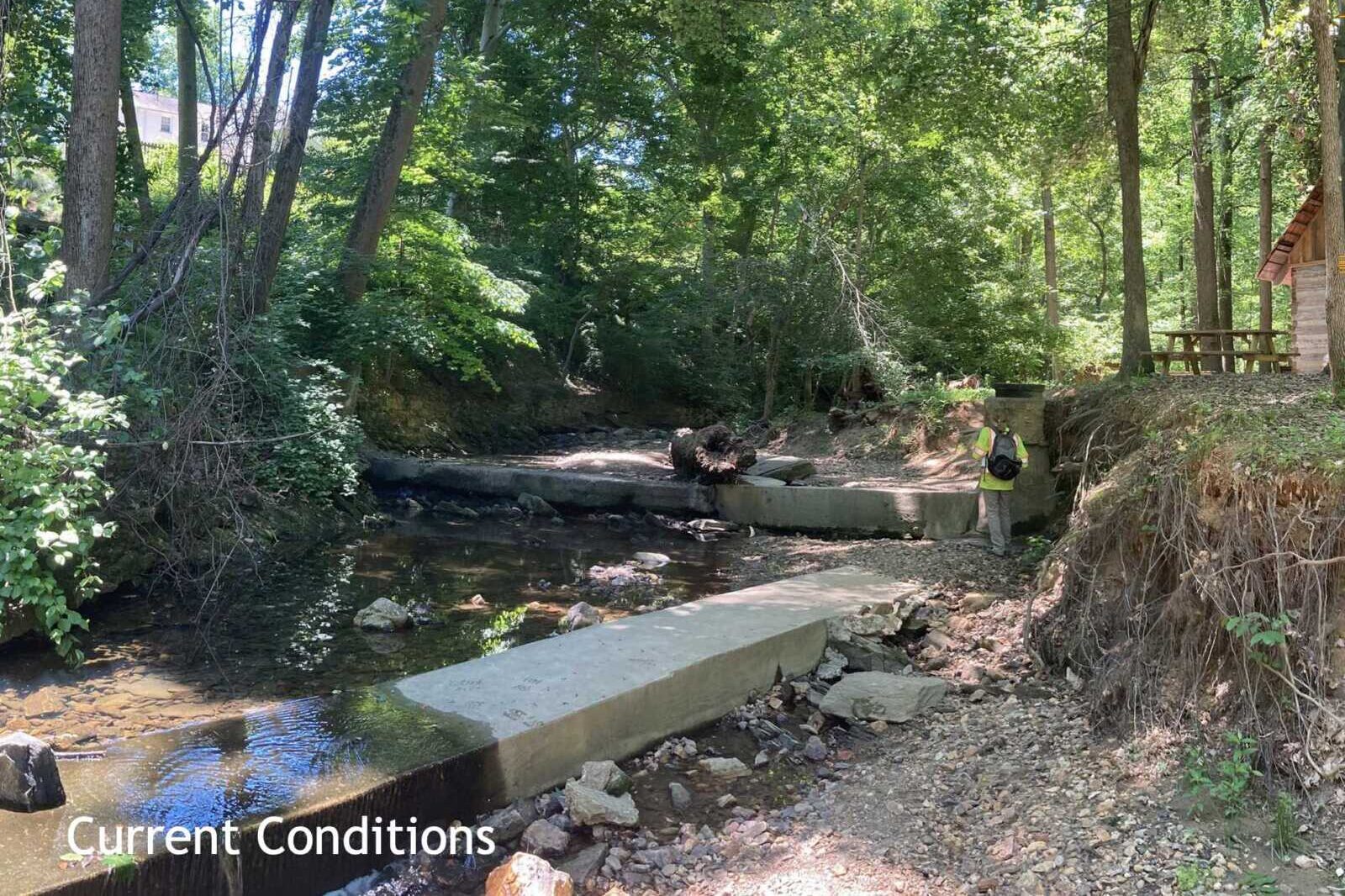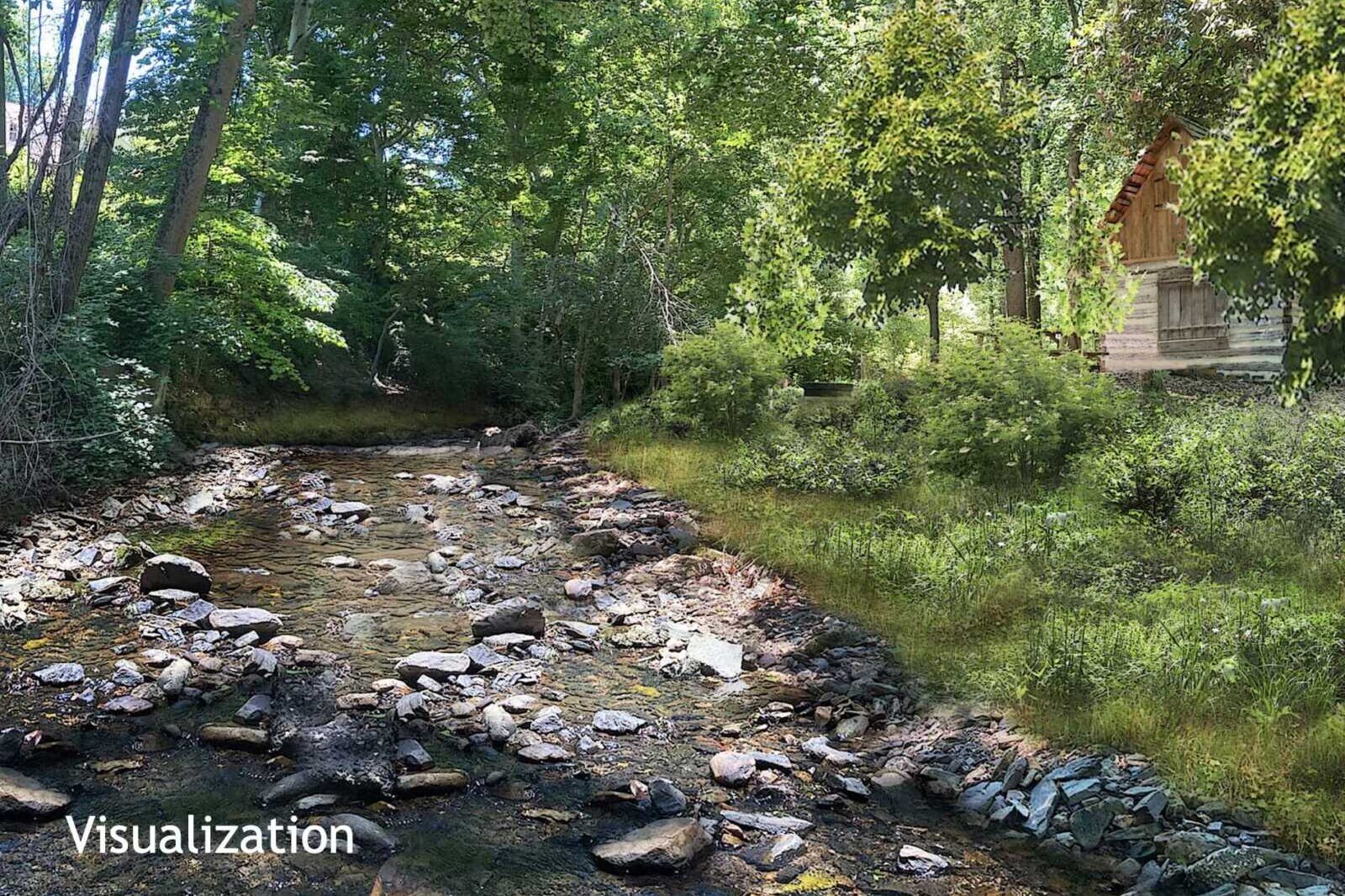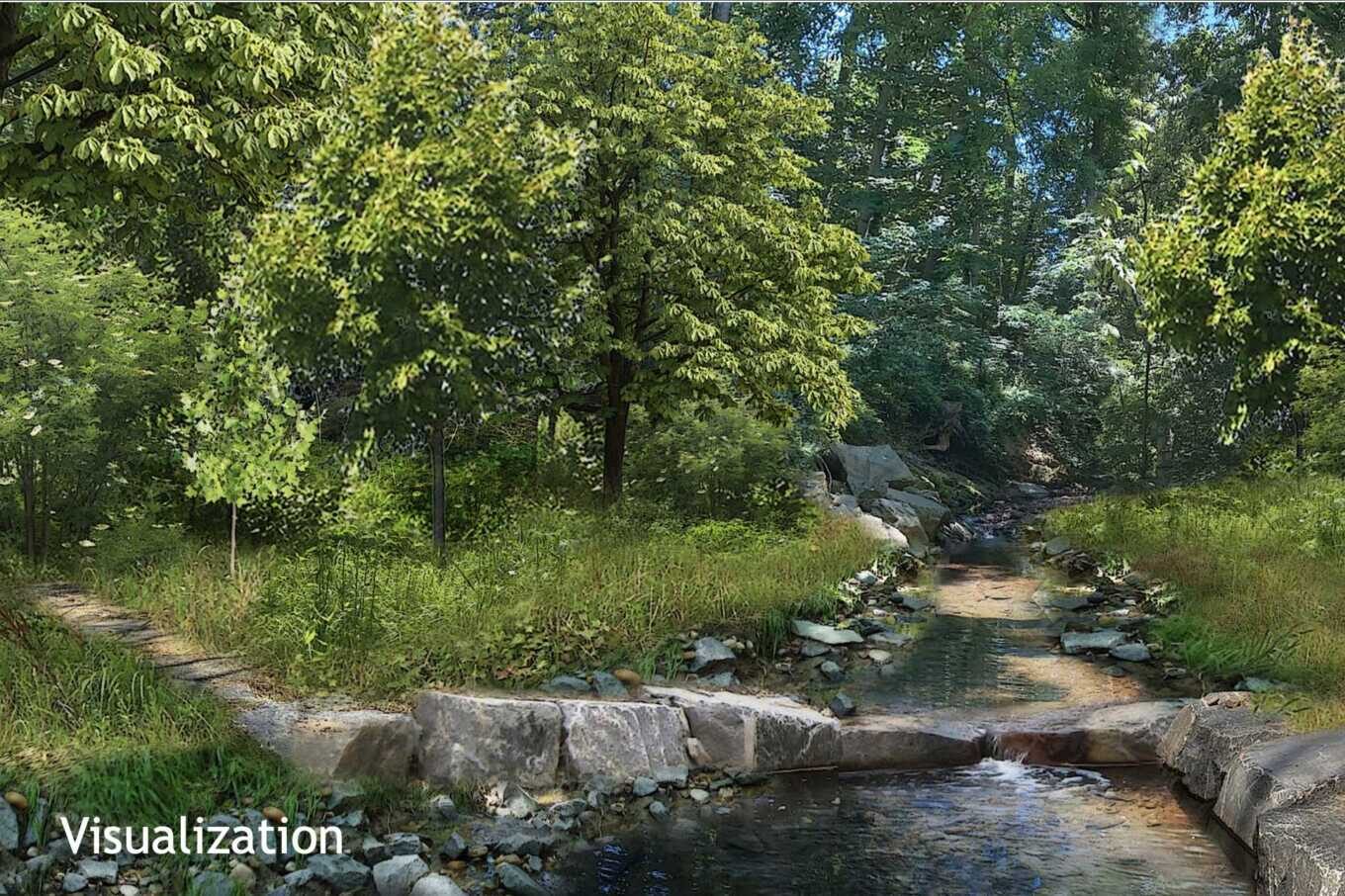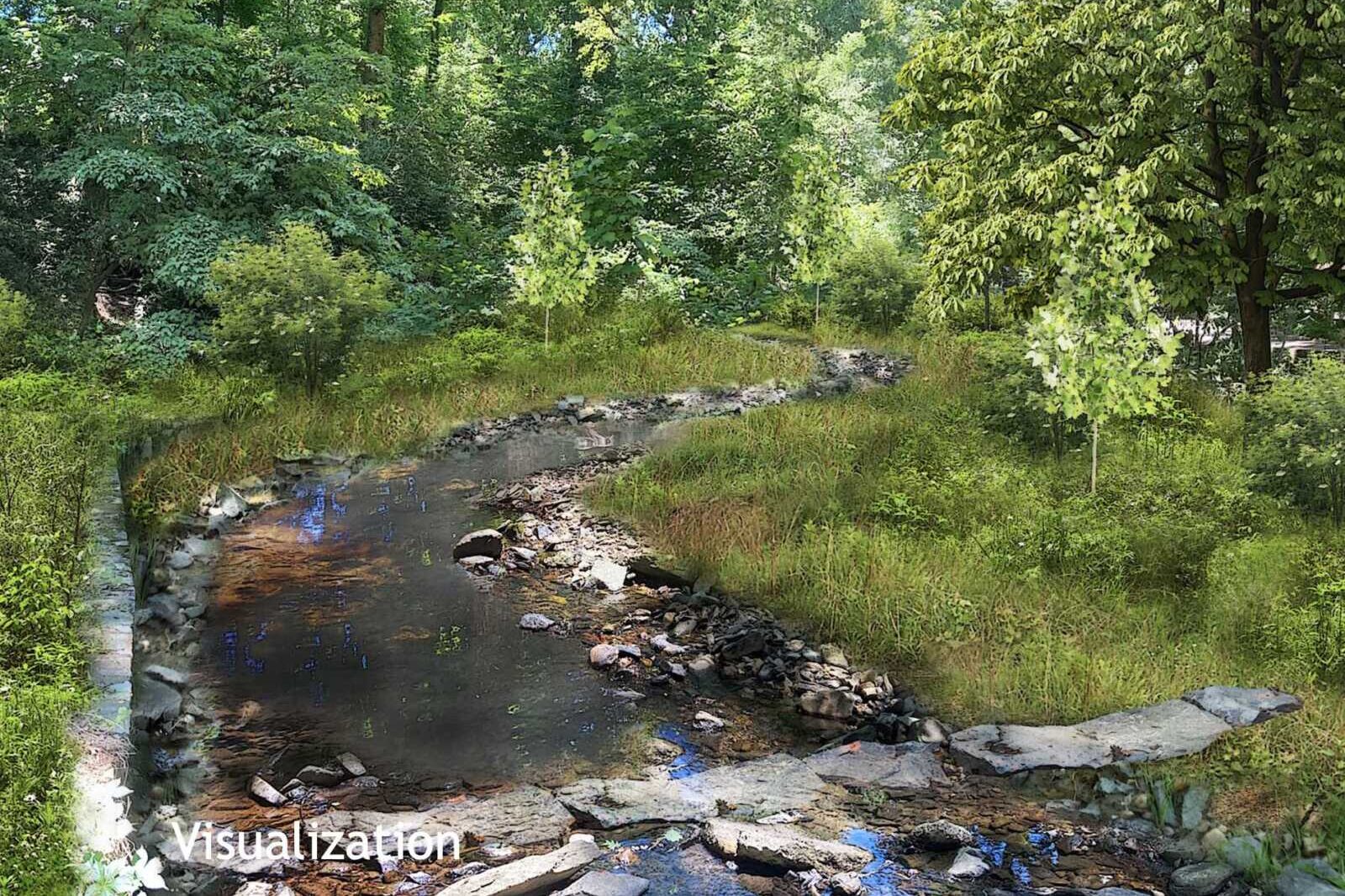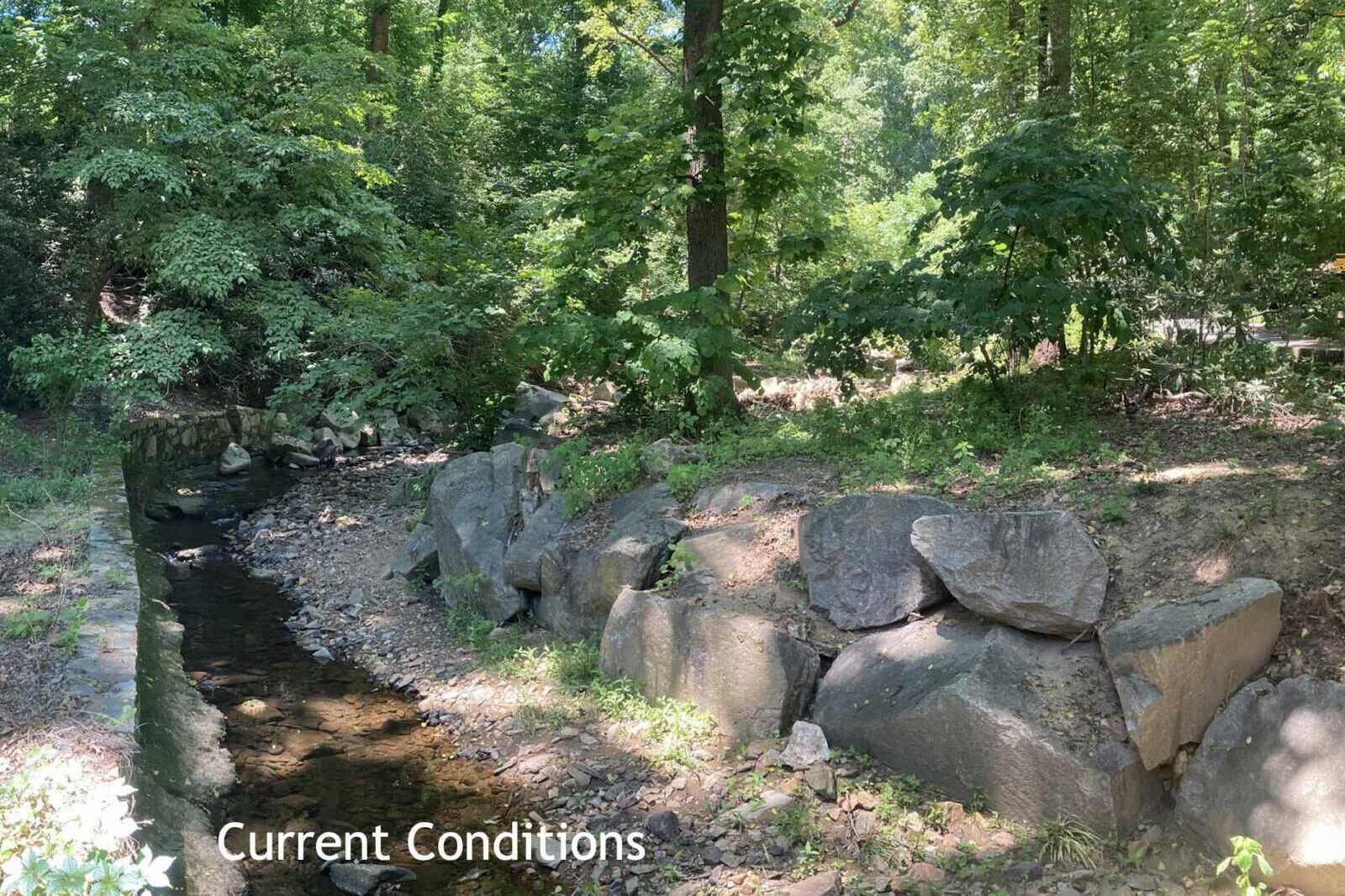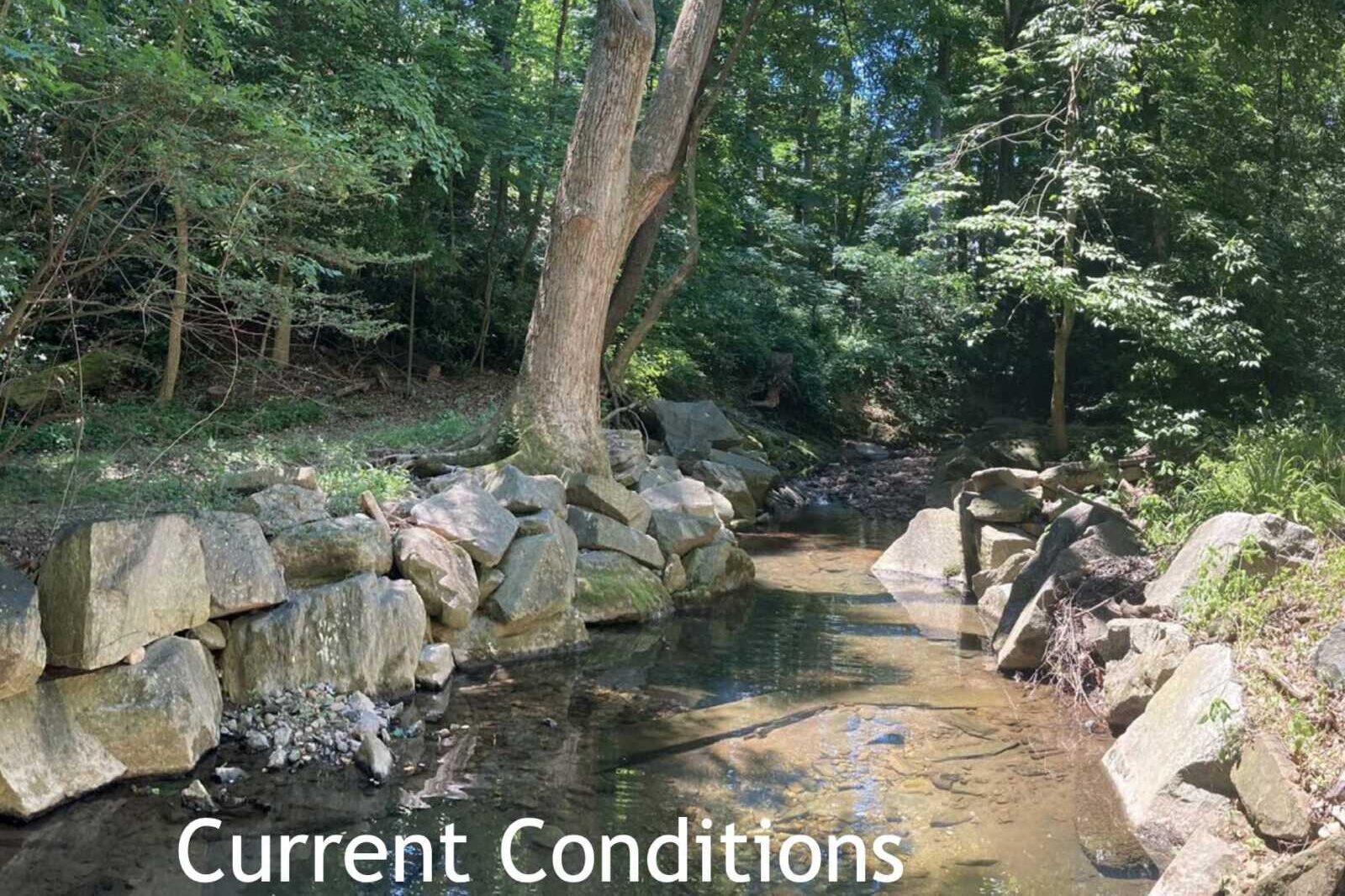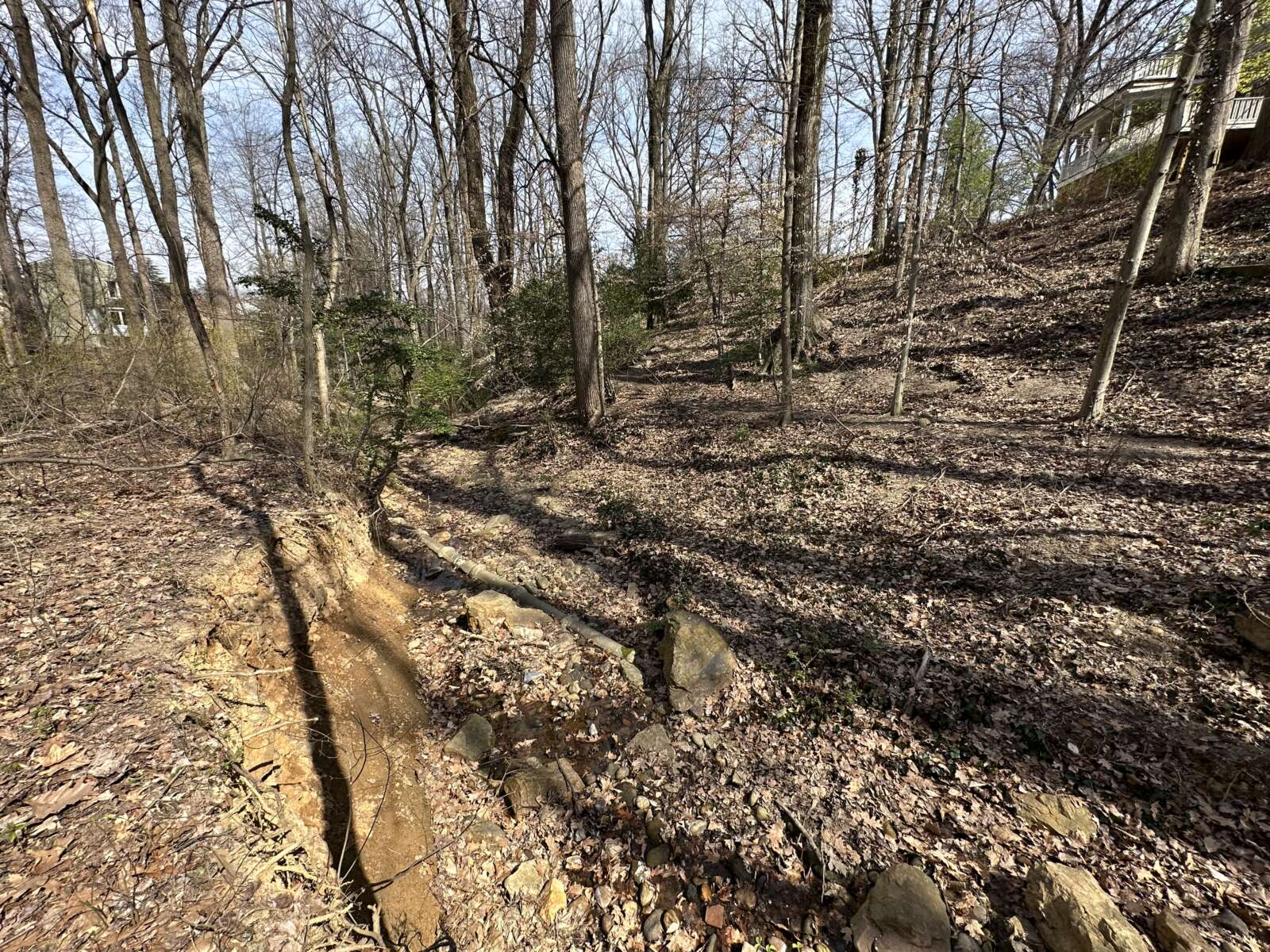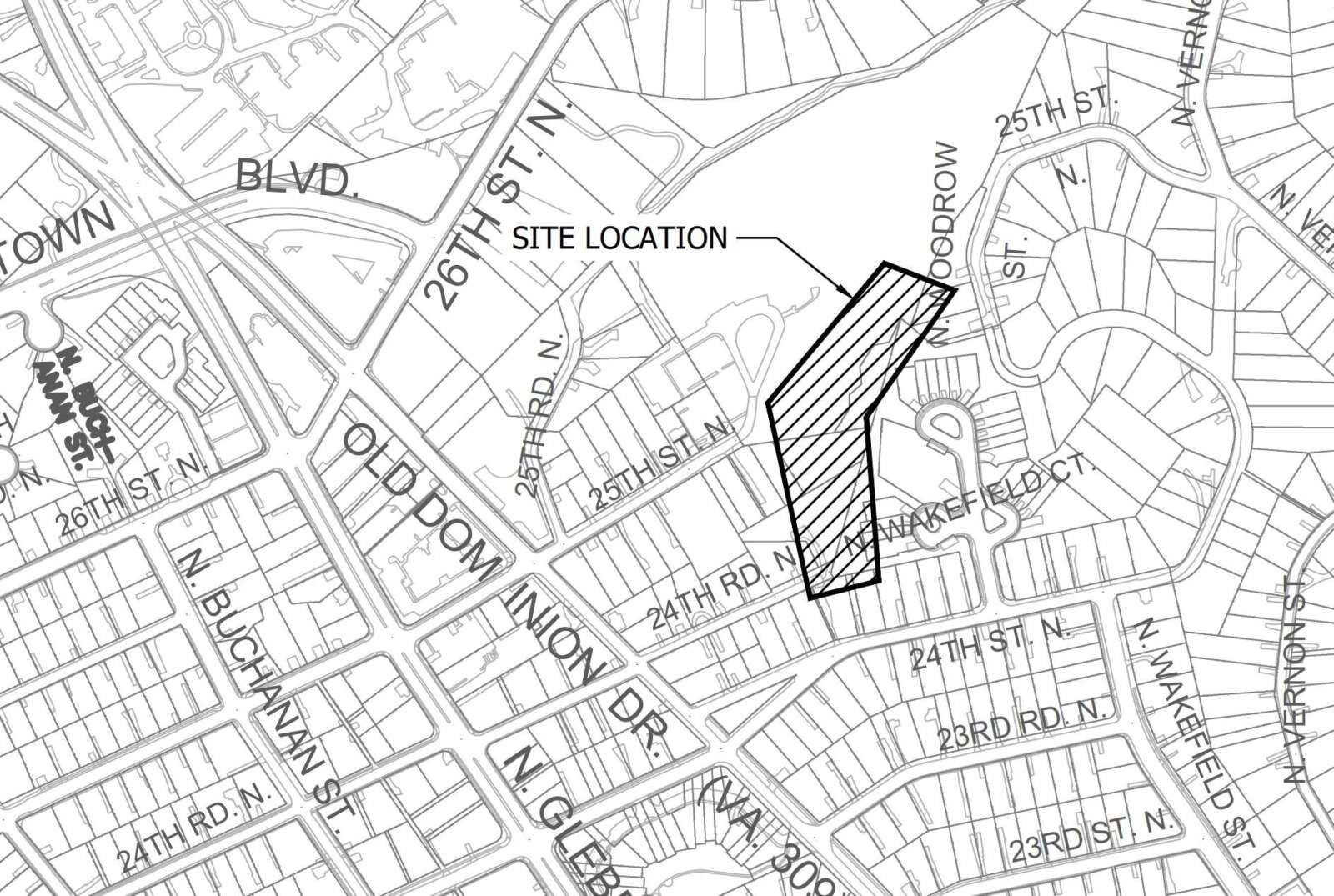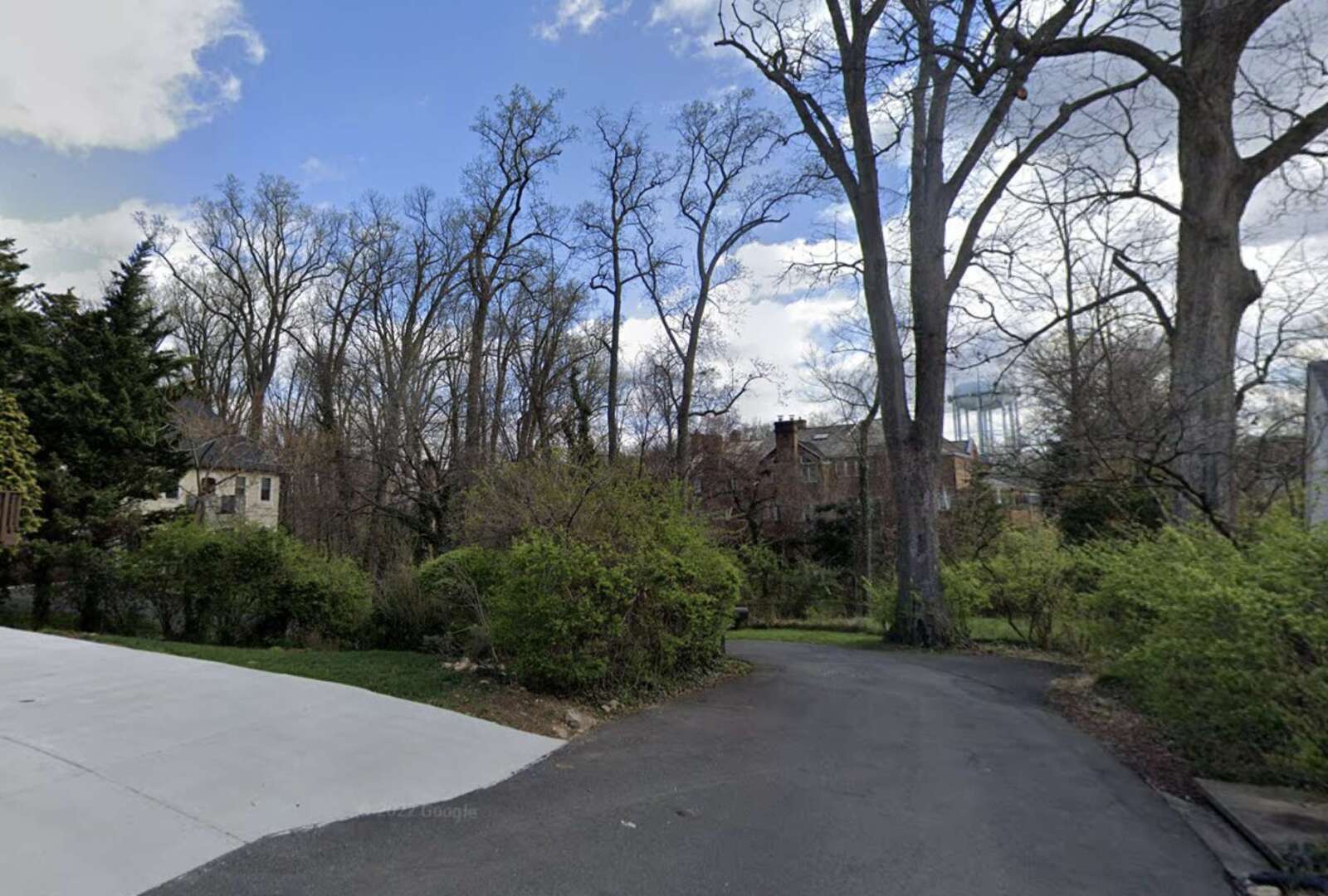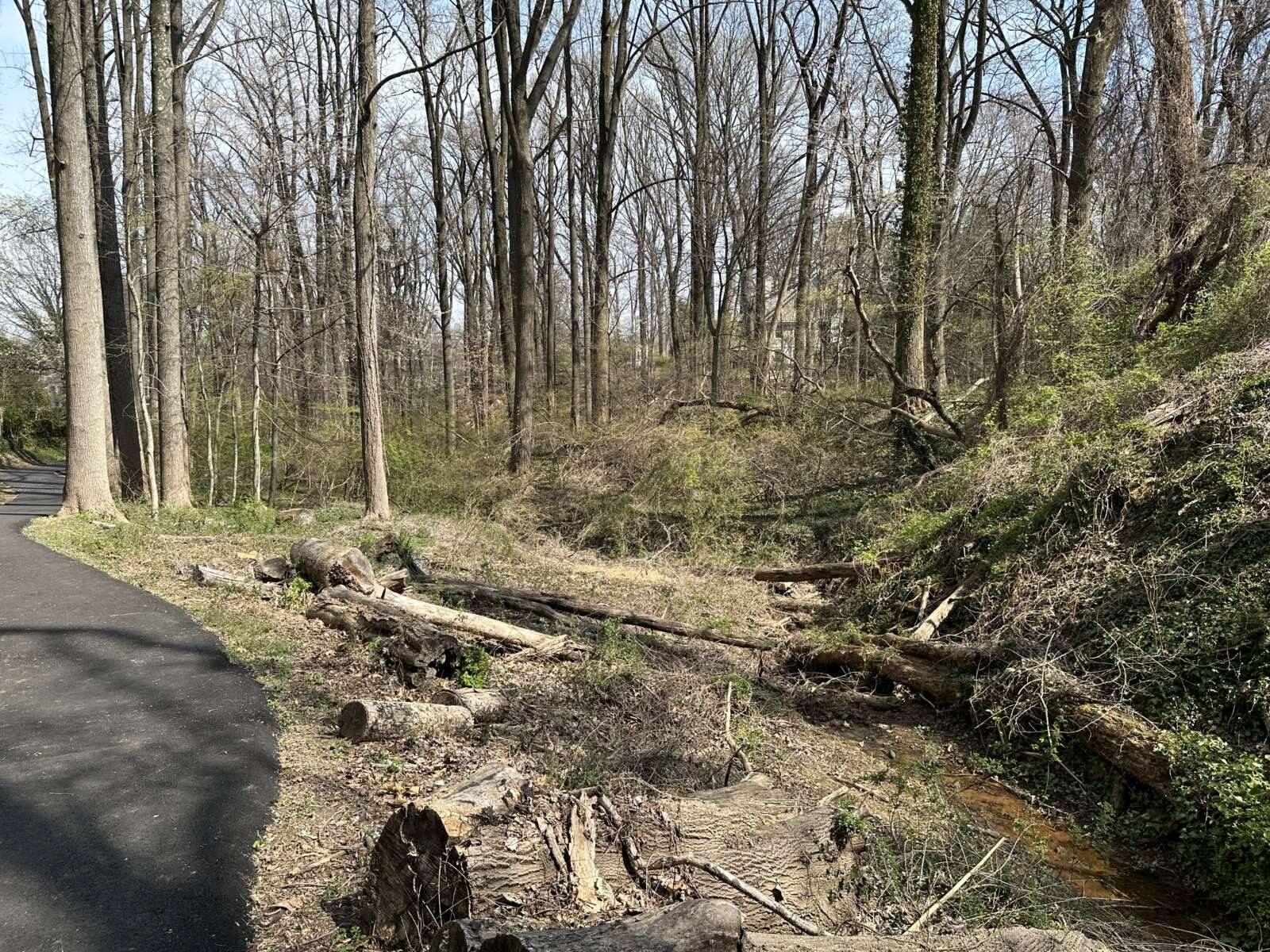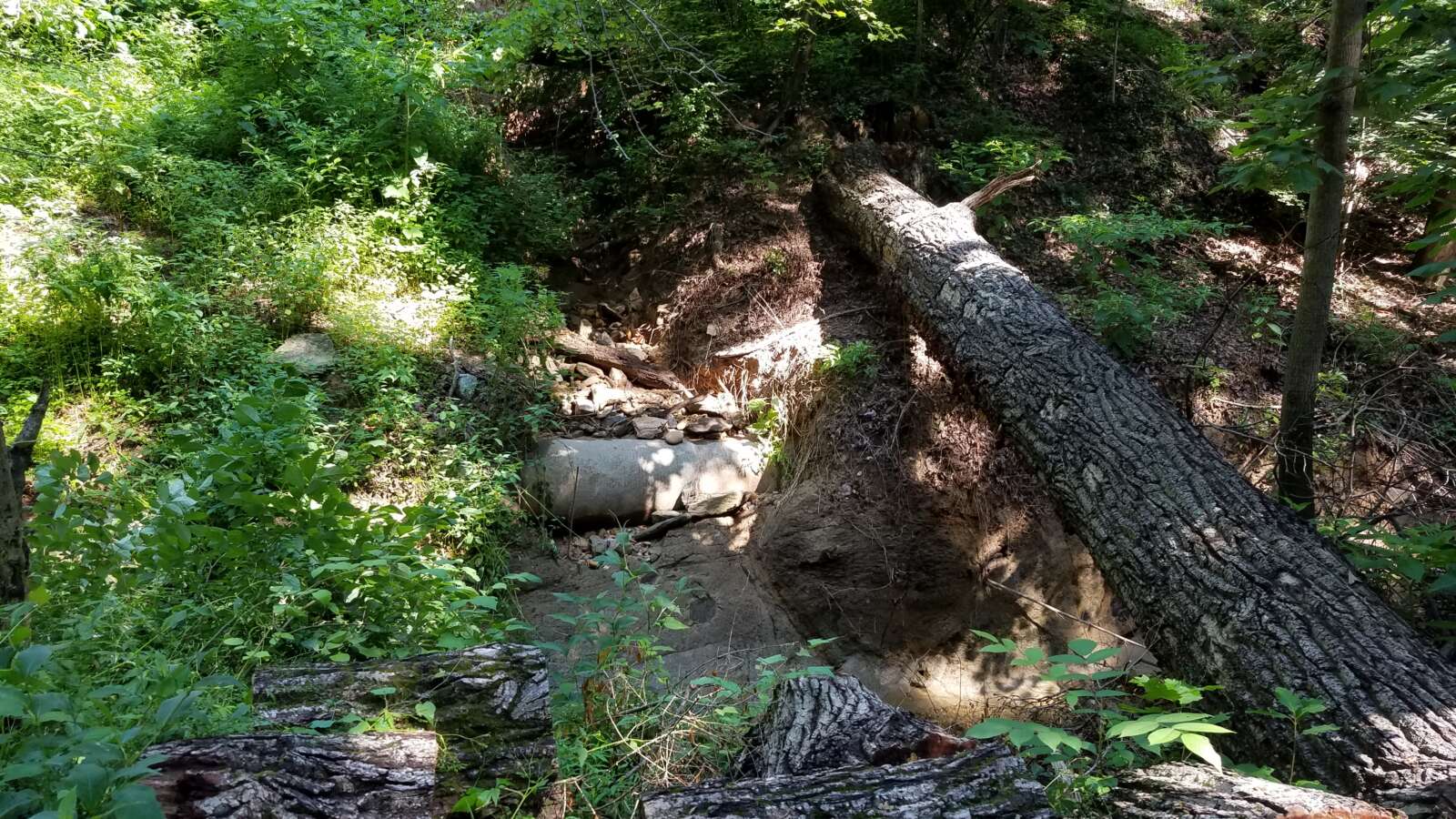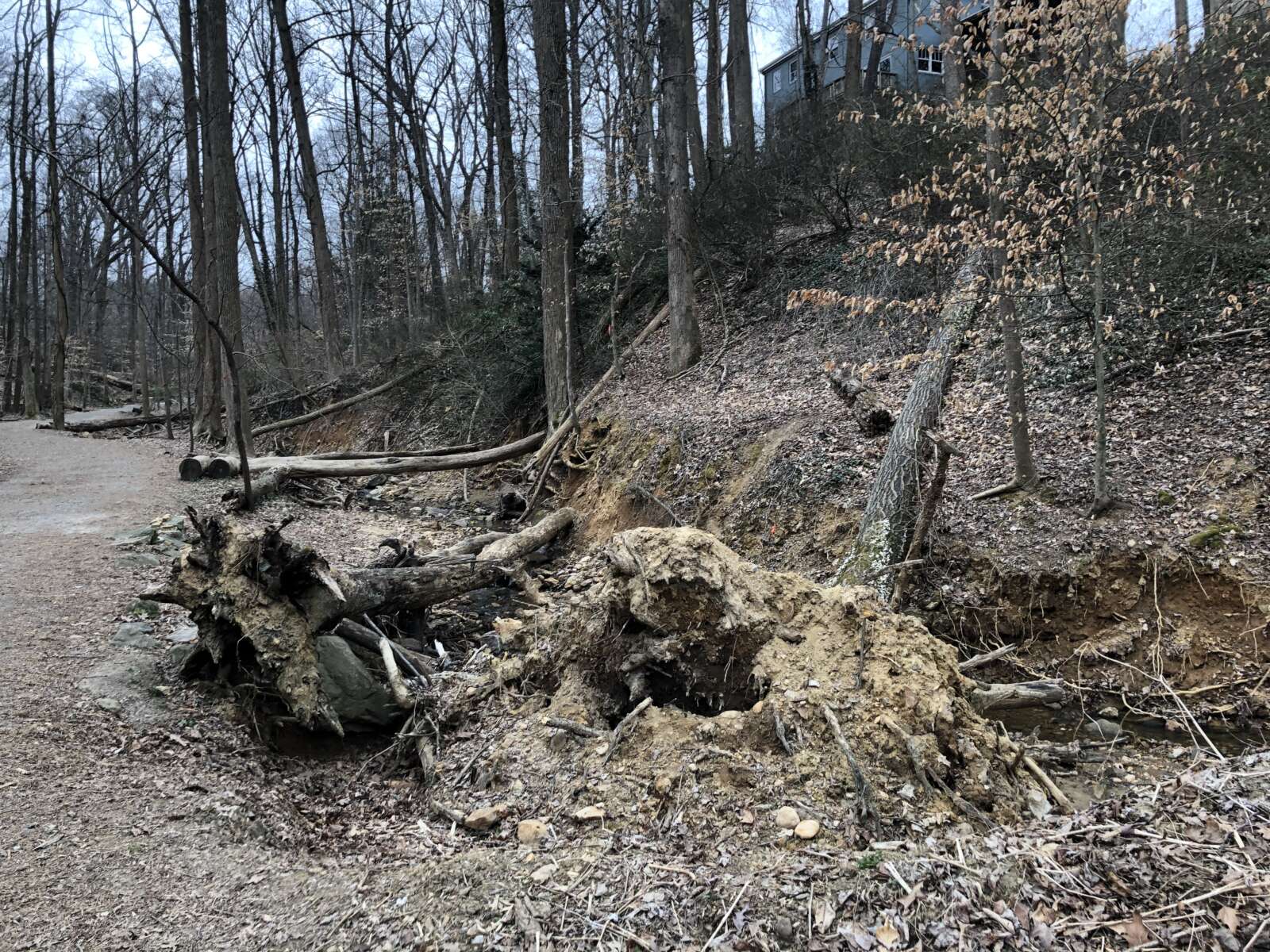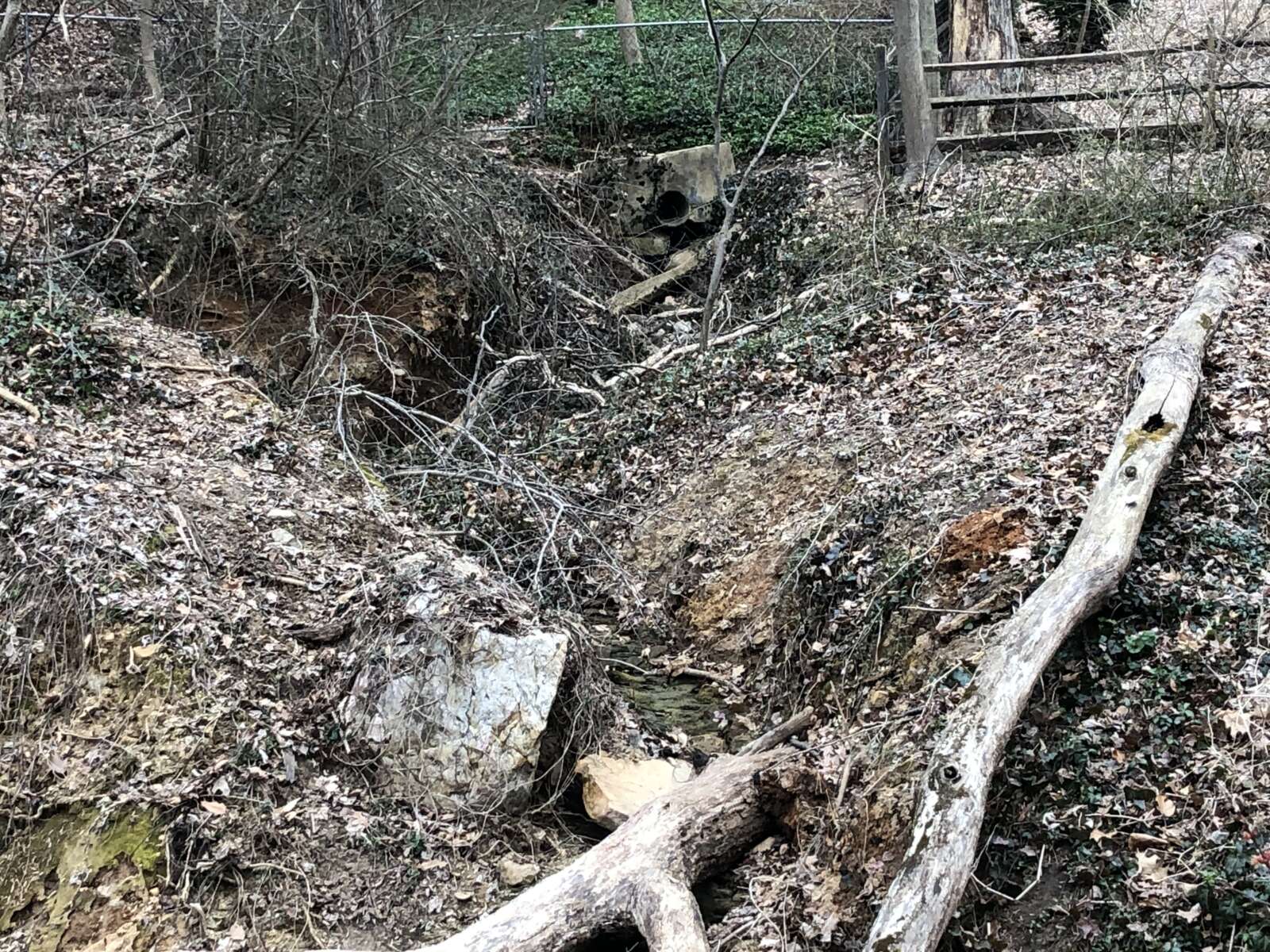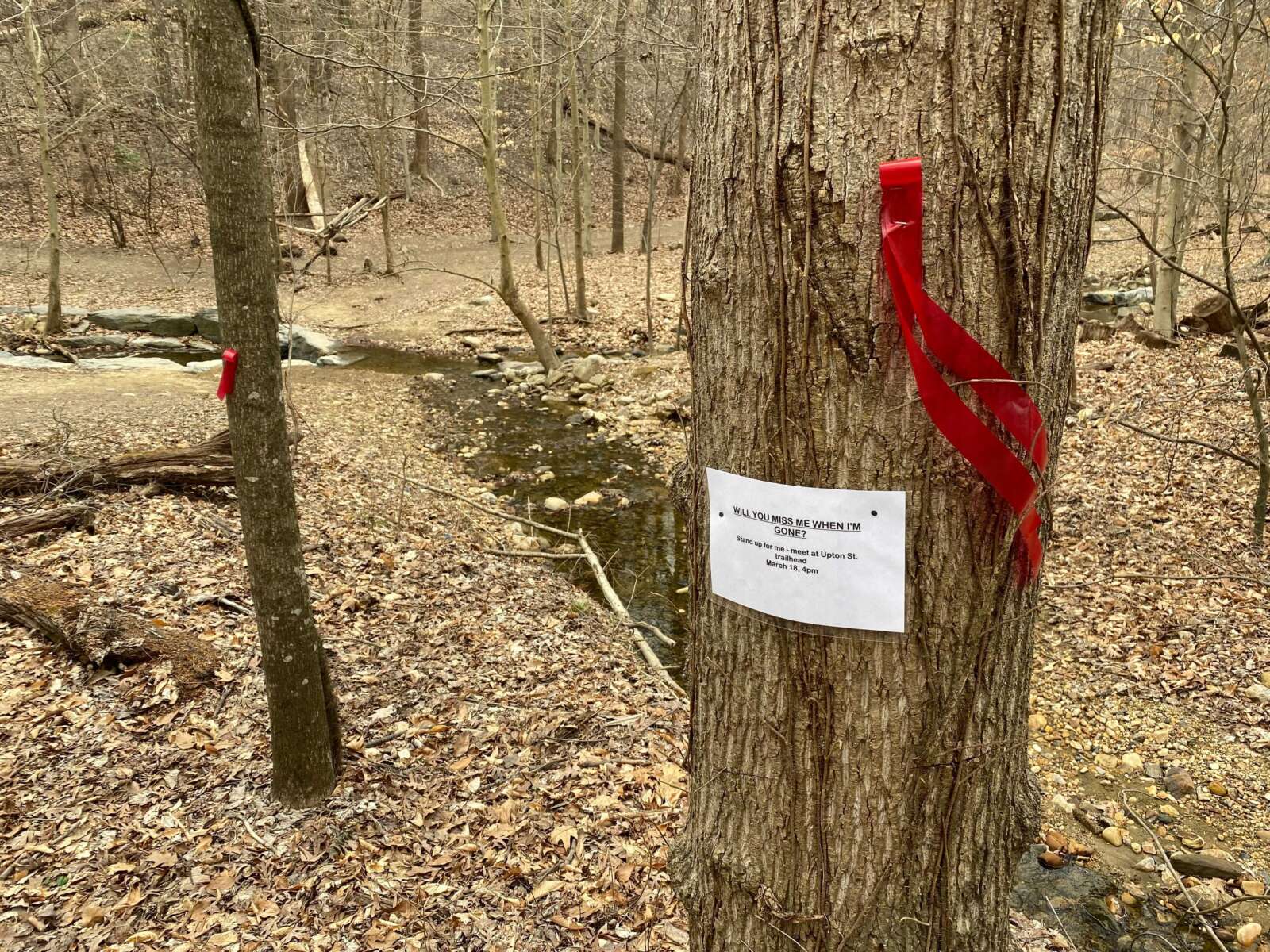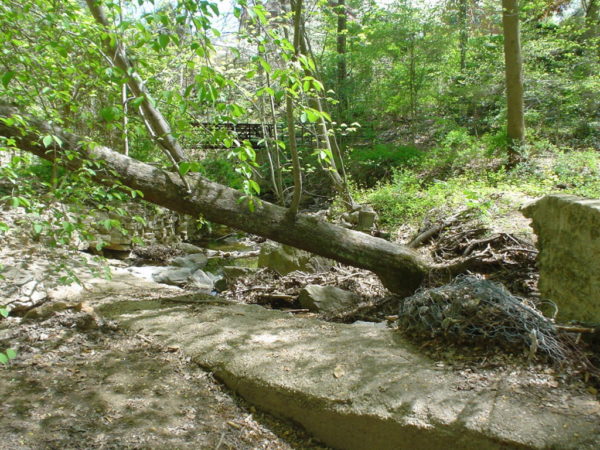In 2025, Arlington County will embark on a major project to rehabilitate the Gulf Branch stream.
Planning for the project began in 2019. The project was paused during the pandemic due to budget constraints but remained in focus due to the stream’s poor conditions today.
“Gulf Branch is a high-priority stream resilience project because of active erosion, infrastructure concerns and habitat degradation,” the county said.
After a two-year pause, Arlington resumed design work and had 60% complete designs by last October. Now, the county’s Dept. of Environmental Services is seeking feedback on the designs.
Final design work, permit acquisition and procurement are all expected to happen this this year. Construction would then start in 2025.
Arlington County aims to combat future erosion and ensure the stream can handle surges of water during storms. The extent of erosion today can be seen in a county video, below, walking through the most recent project updates.
As part of the project, the stream corridor will be replanted and stone and log structures and step pools will be added behind the Glebe Park tennis courts and near Broyhill Forest Park and the Gulf Branch Nature Center.
Also near Broyhill Forest Park and the nature center, stream beds will be raised to bury exposed sanitary sewer pipes. This is intended to prevent sewage from seeping into the stream and stave off emergency repairs, according to a project webpage.
Excess sediment will be reduced to meet regulatory requirements for what flows into the Potomac River and the Chesapeake Bay, the website said. The work also includes habitat enhancements for the local wildlife and increased public access to the stream.
During earlier feedback periods, some community members urged DES to take a more proactive approach to tackling erosion, according to an online survey. In response, the county says it expanded the project scope to include a dry stream bed that is west of the Nature Center, running the width of Glebe Road Park.
Additionally, residents were concerned about noise and equipment traffic during construction. To limit these impacts, the county decided to create separate temporary construction entrances to the main stem of Gulf Branch — from Broyhill Forest Park and Military Road — according to DES spokeswoman Katie O’Brien.
DES says it also heard from several people concerned about runoff closer to the stream’s source. In response, it proposed four “green street” rain garden projects in the watershed, downstream of Military Road.
The locations are as follows:
- The N. Piedmont Street cul-de-sac
- The corner of 36th Road N. and N. Nelson Street
- The corner of N. Nelson Street and N. Oakland Street
- 36th Road N. near the stairs to the Gulf Branch trail
The county began meeting with people neighboring the proposed green street projects in the fall of 2022 and has since continued that engagement as well as design work.
Construction on the green street projects is expected to begin in mid-2024.


